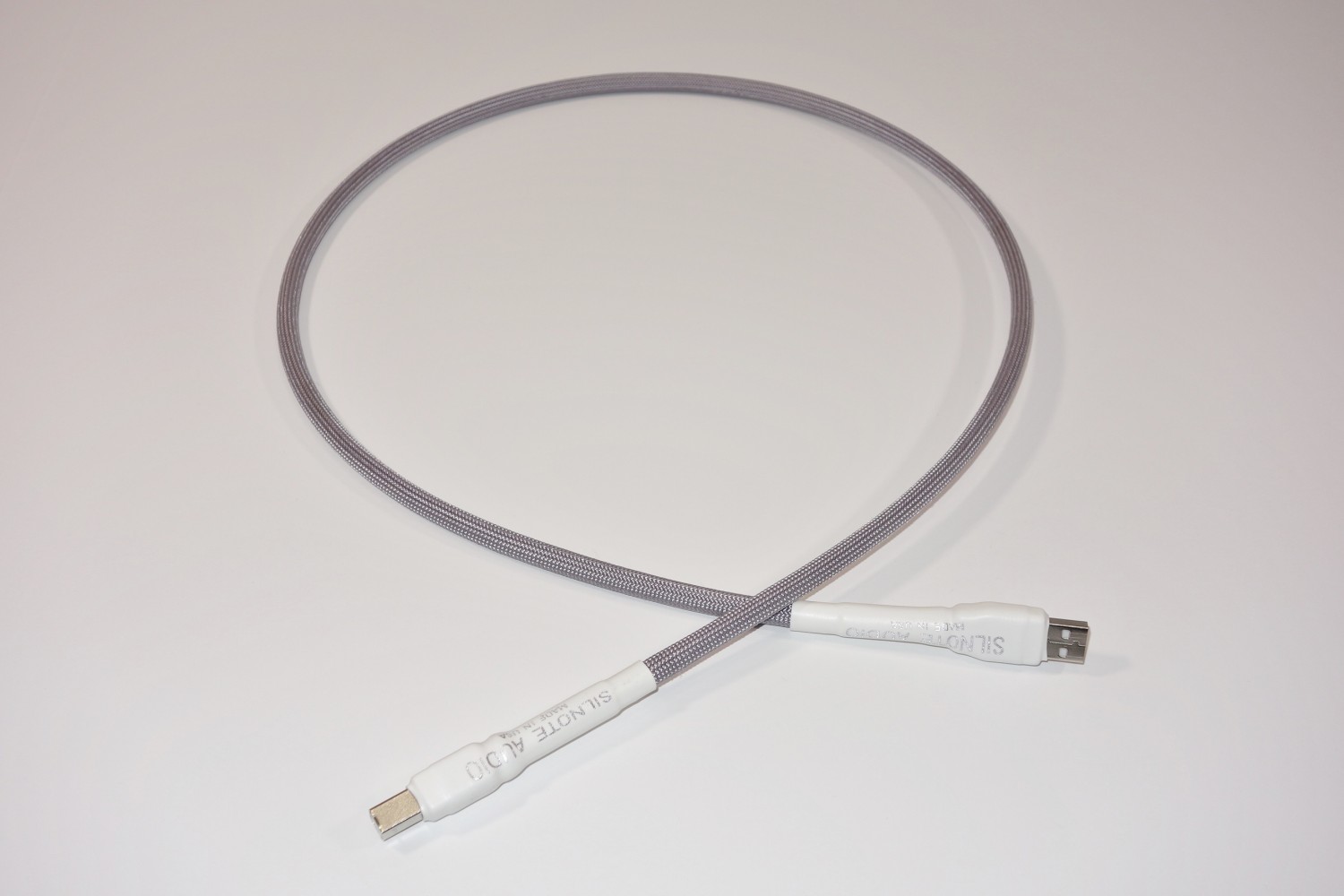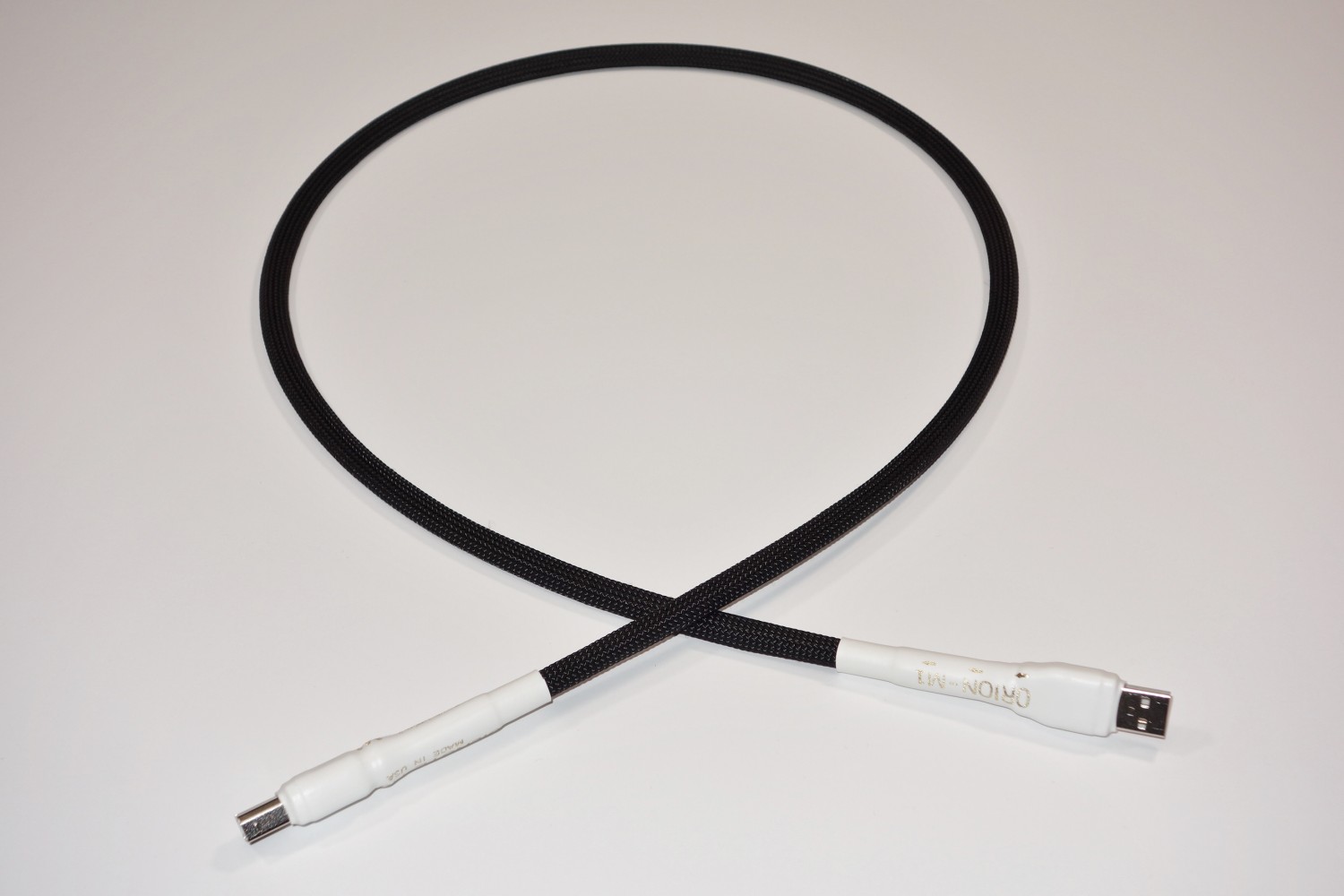There are certain things that are so easily explored by simple trial that I feel no pity for a person who dismisses them without so much as a finger being lifted or a dime being spent to investigate. Had I been such a person I would still be putting together mediocre audio systems, and would still be more than a bit disappointed in their performance. Those who think digital cables all sound similar because they convey digital information, yet find their file playback less than satisfying should take note. One of the mistakes made by people who think they are really sharp is to conclude that “bits are bits” and digital data is not influenced by the conduit. Hang up your pride, simply try some aftermarket USB cables, and you will hear that you have been shorting yourself in terms of the listening experience.
Having traveled the path from cable skinflint to an enthusiast who generously appoints his system, I have an appreciation for economical audio, but I sure don’t wish that to be my experience! The sound is uniformly poor and the experience impoverished. A good test on where an audiophile is on the topic is their perspective on USB cables for file playback. The USB cable is the “final frontier” of cabling. Many hobbyists who have accepted aftermarket power cords, interconnects and speaker cables resist the idea of putting more than a few dollars into a USB link. Big mistake!
Having learned from experience that you never discount the potential of any part of a system to influence the signal, I have on a weekly basis been blessed by willingness to swap cables of all sorts to contour systems. It is such a natural part of the experience for me that I can hardly relate to those who eschew cables as proper components of a system. I applied the same attitude of discovery to USB cables when a few years ago I shifted to file playback. Having seen that every wire associated with an audio system has an influence on the sound, I presumed the USB cable would also. Comparison of USB cables has been a treasure trove of improvement in sound quality.
By this time I have had the pleasure of trying approximately 15 different USB cables from manufacturers such as Furutech, Wyred 4 Sound, Einklein, Pangea, Clarity Cable, Verastarr, and the cables which are the topic of this article, those from Silnote Audio. I assert that the Silnote Audio USB offerings are the best I have heard in use with multiple systems.
The identification and construction of the Silnote Audio USB cables is as follows: the Epirus Master Reference USB is designed with Ultra pure solid core silver conductors in a natural unbleached cotton dielectric; the Orion-M1 Master Reference USB is built similarly, but with a combination of ultra pure solid copper and solid silver conductors (not silver OFC). Both are built to USB data specs with 90 Ohm impedance. The data lines and power lines are completely isolated from each other using a special shielding system. This unique shielding design allows for zero interference and a very open, detailed, and musical sound quality. Standard USB type A to USB type B connectors are used, and WBT Silver solder is used at all solder points.
Everyone has their “secret sauce” when it comes to cables, and Silnote is no different. Mark Williams, owner and designer of Silnote Audio Cables, has sworn me to secrecy regarding the magic in the USB cables. Of course, it’s not magic, it is design, and it’s an excellent one for conveyance of a digital music signal. Of all the cable designers’ USB products used previously, I would rank Silnote, Verastarr and Clarity Cable as the top three. I typically use a meter length USB for all applications.
Some systems and results
The Silnote Audio Cables Orion yields a warmer, less defined sound than does the Epirus. As copper tends to have a more lush, but slightly less distinct sound in comparison to silver’s tighter but brighter character, so also these USB cables follow this pattern. However, I have found that some cables with silver are harsh, while others are gentle on the ears. The Epirus, the one with silver conductors, manages a tricky feat of being supremely refined without excess brightness. I have come across very few cables of any sort that manage this as well. Other USB cables I have tested have the characteristic of a more “edgy” sound, but not the Epirus.
My initial rig was comprised as follows:
Mac Mini running iTunes with HQPlayer software and PS Audio power cord
Silnote Orion USB
TEO Audio Reference Liquid Interconnect MkII (RCA)
Red Dragon S500 Stereo Amplifier in Mono mode
Clarity Cable Vortex Power Cord on the Red Dragon S500
Silnote Anniversary Master Reference Series Speaker Cables
Kingsound King III electrostatic speaker with VAC Royal Power Supply and Silnote Poseidon GS Reference Power Cable
- (Page 1 of 2)
- Next page →




Do you plan on reviewing more silver conductor USB cables ?
Has there been a definite answer to why the preamp did not work well with some USB cables ?
A bit late on my response / question, but I am curious about the differences between these two Silnote cables compared to the very good Verastarr Nemesis USB cable, which I happily run in my system now. Any thoughts Doug?
BTW, your reviews have been spot on! I love my Red Dragon S500, along with a Teo GC interconnect, and the Verastarr USB cable. Many thanks!!
Mark,
God’s Joy to you,
In general I was able to get excellent results with both the Silnote and the Verastarr USB cables. The Epirus Master Reference would be more similar to the Nemesis. I am not sure that the difference in performance between them would be considered enough for you to make a change. If you are enjoying the Nemesis you may wish to work with other cables, i.e. power cords.
Blessings,
Douglas Schroeder